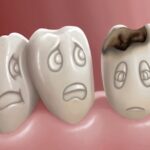The lungs of 50% children are affected badly in Delhi
New Delhi, June 21, 2019 :
Healthysoch : Inhaling foul air straightway signals to air quality in Delhi and the National Capital Region (NCR) alongwith Gwalior in Madhya Pradesh and Raipur in Chhattisgarh. The deadly particulate matter that we inhale is really injurious to our organs. The thick clouds of smoke are found in Delhi and NCR. We are confronted to face the foul inhaling of air that can prove carcinogenic. We are at the mercy of poisonous air rather than fresh air. As such, air pollution in India is the fifth largest killer that snuffs out 1.5 million lives approximately every year. The lungs of 50% children are affected badly in Delhi. The air pollution has spiked far beyond acceptable levels. So, the hazards of air pollution are causing a number of deaths in Delhi whose high number is really alarming.
The capital city of Delhi, once called the heart and soul of India has become deadly as 80 lives are lost daily according to a new study. These deaths generally fall prey to heart attacks and strokes rather than respiratory disorders. Leading observations about the malefic effects of air pollution in Delhi and the adjoining areas include Joshua Apte from university of Texas, Julian Marshall from University of Minnesota, Michael Brauer from University of British Columbia and Dr. Aaron Cohen from Health Effects Institute.
The recent study and research has revealed stunning results of air pollution. The number of people who lost their lives every hour has increased by three times in about 20 years. This number may even hike by 20 to 30 percent if no action is taken. World Health Organization had named Delhi in 2014 as the most polluted city in the world, with 13 out of 20 most polluted cities of the world. PM 2.5 was again cited as the graveyard source of Delhi.
Delhi’s premature deaths could be controlled if the administration could venture to take effective remedial measures to control air pollution and meet its national ambient air quality standards. The safe standard for PM 2.5 in India is 40 microgram per cubic metre (annual average standard), but it is four times higher than the World Health Organization guidelines (10 microgram/cubic meter) Eighty five percent premature deaths could be easily avoided had Delhi paid attention to meet the standards laid out by the W.H.O. C.S.E warns that pollution and congestion crises will worsen this decade if urgent action is not taken. It has been observed that air quality level drastically deteriorates reaching hazardous levels in three consecutive months i.e. October to December. November 2017 is known as the Great Smog of Delhi when air pollution raised considerably far beyond acceptable limits. Delhi’s air is twice as bad as Beijing’s air. Experts in several monitoring stations have reportedly measured an air quality index (AQI) of 999 in October 2017. This is according to experts, equivalent of smoking 45 to 50 cigarettes a day. So, national capital was called ‘Gas Chamber’. This pollution has been resulting deaths among children as well as adults or if not deaths, it is reducing their life span. which may be even ten years. Poor quality of air is the cause of reduced lung capacity, headaches, sore throats, coughs, fatigue, lung cancer etc. Research shows that pollution can lower children’s immune system and aggravate the risks of cancer, epilepsy, diabetes and even adult-onset disease like multiple sclerosis.
There are numerous causes for the pollution particularly in Delhi, and in general at many other places. We ourselves are responsible for the situation we are in. It is the gross insensitivity towards the environment and the attitude of the authorities. Motor Vehicle emission is one of the causes of poor air quality. Issuing pollution check certificate has become a farce. Vehicles do not undergo mandatory check before the issuing of the certificate. Sometimes adulterated fuel is used by commercial vehicles to reduce input costs.
- Population explosion is another factor to enhance pollution. More population means more vehicles, more ACs, more machines, more construction projects and consequently more polluting gases with hazardous pollutants.
- Wood burning fires, fires on agricultural land, exhaust from diesel generators, dust from construction sites, burning garbage and illegal and unauthorized industrial activities also lead to pollution in Delhi.
- The Badarpur Thermal Power Station is a source of air pollution in Delhi. It produces less than 8% of the city’s electric power but throws out 80% to 90% particulate matter of pollution. It was temporarily shut down during the Great Smog of Delhi in November, 2017.
- There are mist emissions also from the wet cooling towers that are much used in industry and other sectors to dissipate heat in cooling systems.
- About 10% people use wood that was crop residue, cow dung and coal for cooking. The reports are based on the census carried out in 2012.
- Agricultural stubble burning also affects Delhi’s air quality when crops are being harvested.
- Lack of political will can also be one of the causes as the authorities go on blaming other states without planning and above all, lack of execution in the true and earnest manner.
The air pollution problem should get top priority. Some remedial measures have been put forward by the authorities concerned and some might have been employed. But the residents need the outcome and the effectiveness of measures.
- There should be proper paving of all the areas around roads. It can reduce air pollution.
- Air purifiers should be installed at high risk places of pollution.
- Cleaner production processes at factories should be promoted. A time-limit should be set for heavy-industries. Emission policies should be strict for the industry who pollute the rivers with hazardous bye-products.
- An awareness drive should be inculcated among the people. Schools and residential areas should adhere to the norms.
- Subsidies and incentives should be provided for the reduction of stubble burning.
- Old vehicles should be banned. The Supreme Court of India has recently issued orders to ban diesel cars that are ten years old.
- Introduction of alternate and cleaner fuels like CNG, LPG, ethanol blending may prove useful. There should be awareness for Hybrid fuel vehicles and Electric vehicles.
- Diesel-generator sets should be banned. There should be launching of National Air Quality index on large screens.
- Coal-burning and fire-wood need to be stopped by hotels and other industry.
- Campaigns should be organized in rural areas to educate people.
- Public transport should be augmented by adding electronic buses in the national capital and weed out those buses that do not meet the standard norms.
- Social media should create awareness among the residents.
- A bypass transport route may be constructed around Delhi.
- Smog-free towers should be provided at critical hotspots. The number of e-rickshaws should be increased.
- Recently, the government has inaugurated KMP (Kundli-Manesar-Palwal) expressway to reduce traffic in Delhi and thus ease the pollution level. Such steps may help a lot to reduce the level of air pollution.
- More saplings should be planted to counter pollution from existing thermal power plants.
- More cities may be built across North India to reduce the pressure of Delhi.
- Recently, the government is planning to have artificial rains in Delhi.
- Fire crackers should be banned or the tenure of firing these should be reduced. Recent orders of the Supreme Court about fire crackers for two hours only ended up in smoke. Ms. Tomar has remarked very well: “How can you grow economically when, within your country, your citizens are facing economic problems because of the air pollution”.
However, the ministry has introduced an early warning system to help it make preemptive action before pollution spikes and its planned measures like deploying more road-sweeping machines.
We ourselves are responsible for the situation we are in Delhi and NCR. We see young ones wearing masks to school. The elders are restricted indoors. Pollution in Delhi and NCR needs a resolution also along with solution. People, authorities and NGOs should put their heads together to bring about a change in the vitiated environment. We should recognize the need for pure air, clear air for a better and healthy life. Our souls should be stirred so that the residents of Delhi and NCR breathe fresh air and love to stay in Delhi-the heart of India.
The Author of this article is Dr Jaswant Singh Puri







